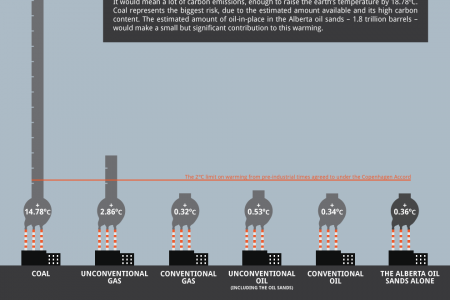
The Carbon Budget
WORLD RESOURCES INSTITUTE THE CARBON BUDGET The international consensus of climate experts is clear: The world is warming, and it's largely due to human activities. We're now living on a planet where global temperatures are warmer than most of the past 11,000 years. The Intergovernmental Panel on Climate Change (IPCC) recently identified the world's "carbon budget," the amount of carbon dioxide that can be emitted if we are to have a likely chance of averting the most dangerous of climate change impacts. The world is currently on track to spend the remainder of this budget in just three decades. Here's a look at the implications of exceeding the carbon budget-as well as actions the world can take to stay within it: WHAT IS THE CARBON BUDGET? The carbon budget is the estimated amount of carbon dioxide the world can emit while still having a likely chance of limiting global temperature rise to 2°C above pre-industrial levels. The international scientific community estimates this budget to be 1 trillion tonnes of carbon (1,000 PgC). 2°c The 2"C target has been adopted by the countries within the United Nations Framework Convention on Climate Change (UNFCCC). 1,000 PgC 515 PgC ...** 1,000 PgC 2011 2045 We've already burned through 52 percent of the budget, emitting 515 PgC since the Industrial The world has only 485 PgC left in the budget. We'll exceed this amount before the end of 2045 if emissions Revolution (1861–1880). rates continue unabated. WHAT IMPACTS ARE WE SEEING TODAY? Spending the first half of the carbon budget has come at a cost. We're already experiencing significant extreme weather and climate events, providing glimpses of what will become more common in a warmer world. For example: Global sea level rise has accelerated, Forest fires are on the rise in many Heavy precipitation events have increased in some places. Every region in the United States observed Longer, more intense droughts are already occurring in some regions. Scientists say the conditions that led to the 2011 Texas drought are 20 times more likely to occur now than in the 1960s. rising almost twice as fast between 1993 and 2010 than from 1901 to places. The Westerm United States now experiences seven times more large-scale wildfires than it did in 2010. This increase leaves an increase in heavy precipitation events from 1958 to 2007. communities more vulnerable to the 1970s. flooding and storm surge. WHAT HAPPENS IF WE BLOW THE BUDGET? Even by staying within our carbon budget and keeping global temperature rise to 2°C above pre-industrial levels, some regions will still experience an increased risk of sea level rise, forest fires, water shortages, and other devastating impacts. These risks significantly increase with every degree of warming above 2 degrees. If emissions continue unabated, global The intensity and frequency of wildfires will increase throughout the world with Heavy precipitation events will likely increase over some land areas. For The duration and intensity of droughts sea levels could be nearly 1 meter higher by 2100. If warming is limited to 2'C, global sea level will still rise by as may increase in many regions. With warming of 2°C, the Mississippi, Danube, Amazon, and Murray Darling each degree of warming. Fires in the example, wetter conditions in a 2'C Amazon rainforest could almost double world will increase annual runoff in the by 2050 with only a 1.5°C to 2°C rise in temperature above pre-industrial levels. Higher temperatures would bring even more severe impacts. much as half a meter by the end of the century compared to 1985-2005. Nile and Ganges river basins by roughly 20 percent compared with river basins are projected to see 20-40 percent less annual run-off. 1961-1990 levels, a change that could cause significant flooding. HOW CAN WE STAY WITHIN THE BUDGET? While the world is not on track to limit warming to 2°C, it can still get there with the right amount of ambition. Sticking to the budget can protect communities around the world from some of the most dangerous impacts of climate change. We can stay within the budget by: Meeting existing commitments: Many countries have already made emissions-reductions pledges to the UNFCCC. Fully implementing these plans will reduce global emissions 5-12 percent below business-as-usual trajectories by 2020. Pursuing new action: Countries must pursue greater reductions. Adopting initiatives that strengthen energy efficiency, eliminate fossil fuel subsidies, reduce short-lived climate pollutants like methane, and increase renewable energy hold some of the greatest potential. Peaking emissions: Global emissions must peak by 2020 and then steadily decline in order to cost-effectively meet the 2"C target. Countries should keep this target in mind when pursuing new emissions-reduction plans. Unburnable fossil fuels: Carbon dioxide emissions associated with coal, oil, and gas reserves are 1,053 PgC. Roughly three-quarters of these fuels must remain in the ground in order to stay within the carbon budget. 12 To best ensure we are able to limit warming to 2"C, it is essential that annual global emissions peak by the year 2020, and are reduced steeply thereafter. 10 ------.. PEAK EMISSIONS PgC 6 -50% OF 2020 EMISSIONS 1940 1950 1960 1970 1980 2030 2040 2050 2060 2070 LEARN MORE HERE Quantifying the carbon budget was one of the biggest findings to come out of the recent IPCC report. Learn about some implications-by going to our website: wri.org/ipcc-infographics. the other findings-and their Citations and source matorial can also be found at wri.org/pcc-infographics. WORLD RESOURCES INSTITUTE WORLD 10 G STREET NE RESOURCES SUITE 800 WASHINGTON, DC 20002, USA INSTITUTE +1 (202) 729-7600 wWW.WRI.ORG
The Carbon Budget
Publisher
World Resources InstituteSource
http://www.w...aleedooleyCategory
EnvironmentGet a Quote









